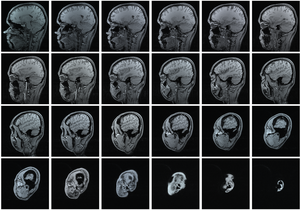Basic & Detailed Tutorial in CT & MRI for Biomedical Beginners
A extensive tutorial in CT & MRI which will cover all the aspect required by an engineer who has just entered Biomedical Imaging field and wants to explore new avenues of the field
This tutorial will help you in getting familiarized with the operation of CT & MRI
In the first, the terms “CT” (computed tomography) and “CAT” (computer axial tomography; also used: computer assisted tomography) are the usual way to refer to the method involved when x-rays are used to generate the means by which the “target” is examined. (Also in common use is a process connotation: “CATscan“.) When other forms of radiation or waves are involved, specialized terms such as “PET” or “SPECT“, two techniques in emission topography, are applied (some of these are defined by the nature of the signal carrier). Thus, there are many other specialized uses of tomographic techniques, such as in Magnetic Resonance Imaging (MRI), optical tomography, acoustical tomography, and processing of Synthetic Aperture Radar (SAR). As an aside, we now show one example of a geophysical tomography application – specifically, seismic tomography – in which the surface of the subduction zone running south of Japan into the Kurile Islands has been reconstructed from seismic refraction data.

Important to an in-depth understanding of tomography are underlying physics and mathematical operations, which are pertinent to the methods of Signal Processing. This complex subject will not be treated here (an extensive search of the Internet failed to find a good review); intrinsic to some types of tomography are such concepts as image formation, wave transformation, interferometry, and Fast Fourier Transforms.
Three Internet Sites that cover some general aspects of CAT are at: (1), (2), and (3).
We will explain the operating principles by reviewing how a typical CATscan is conducted. As a general statement, the advantage of this and other medical tomographic methods is an improved delineation and differentiation of the various soft tissue organs in humans and other mammals. Thus, x-rays in this mode are usually able to separate these organs discretely, especially when absorbing chemicals (e.g., barium compounds) or dyes are used. We begin by showing a typical CAT Scanner in an examining room:




